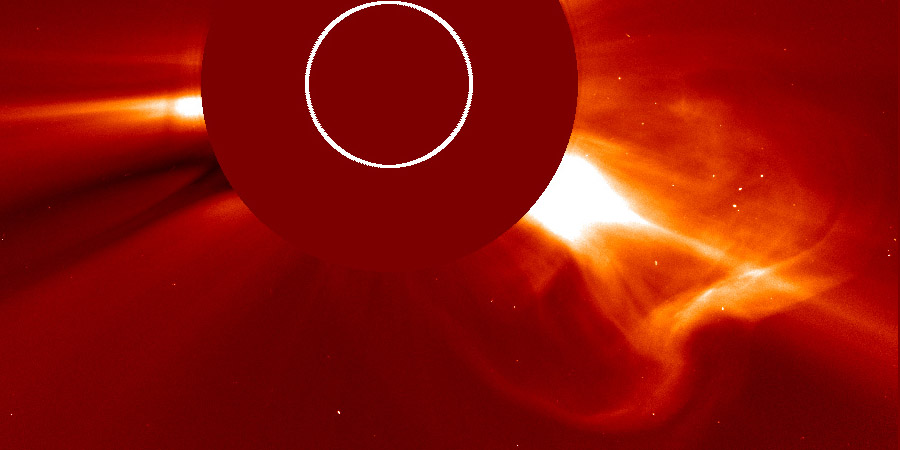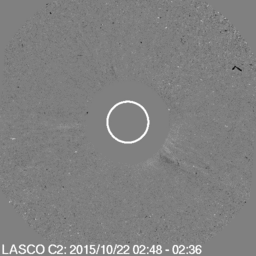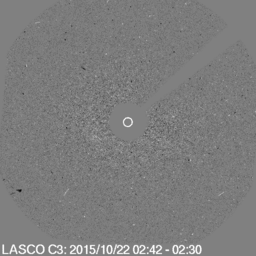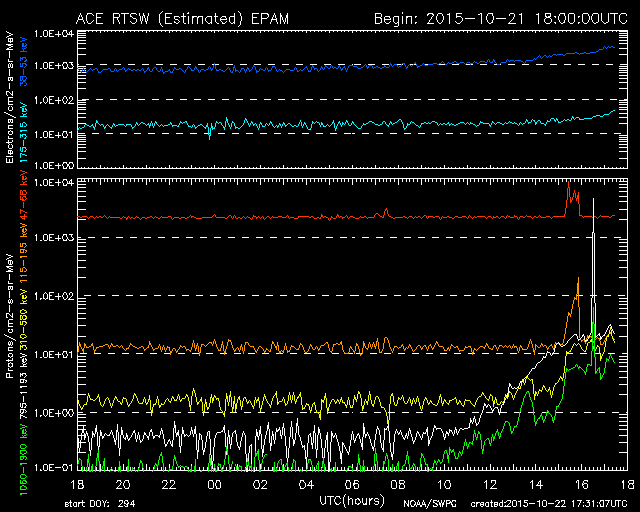Incoming coronal mass ejection?
jeudi, 22 octobre 2015 17:33 UTC

Sunspot region 2434 produced a long duration C4.4 solar flare that peaked today at 03:40 UTC. This solar flare was accompanied by a coronal mass ejection that is propagating mostly southwest of the Sun-Earth line. Sharp eyes can discover a very faint full halo outline if you watch the LASCO coronagraph imagery meaning an earth-directed component can not be excluded.


Images: LASCO C2 and C3 coronagraph imagery showing the coronal mass ejection from today's C4.4 solar flare.
This coronal mass ejection launched at a speed of about 800km/s which gives a possible arrival time somewhere during the first half of October 24. A shock in the solar wind is possible but we doubt there will be any significant (G1 or greater) geomagnetic disturbances from this event. Nonetheless it is something to watch out for in the days ahead, you never know with CMEs!
Note that the low energy protons and electrons as measured by ACE EPAM also started to increase following the event which is also a possible sign that there might be some ejecta on the Sun-Earth line.

Image: ACE EPAM data at 22-10-2015 17:35 UTC.
Thank you for reading this article! Did you have any trouble with the technical terms used in this article? Our help section is the place to be where you can find in-depth articles, a FAQ and a list with common abbreviations. Still puzzled? Just post on our forum where we will help you the best we can!
Dernières nouvelles
Forum
Aidez SpaceWeatherLive.com !
Vous êtes de plus en plus nombreux à consulter SpaceWeatherLive pour suivre l'activité solaire ou aurorale, et avec le traffic les coûts du serveur augmentent. Si vous appréciez SpaceWeatherLive, soutenez notre projet en faisant un don afin que nous puissions continuer à vous informer !

La Météo Spatiale en faits
| Dernière classe X | 28/03/2024 | X1.1 |
| Dernière classe M | 19/04/2024 | M1.0 |
| Dernier orage géomagnétique | 19/04/2024 | Kp7 (G3) |
| Jours sans taches solaires | |
|---|---|
| Dernier jour sans taches solaires | 08/06/2022 |
| Nombre mensuel moyen de taches solaires | |
|---|---|
| mars 2024 | 104.9 -19.8 |


